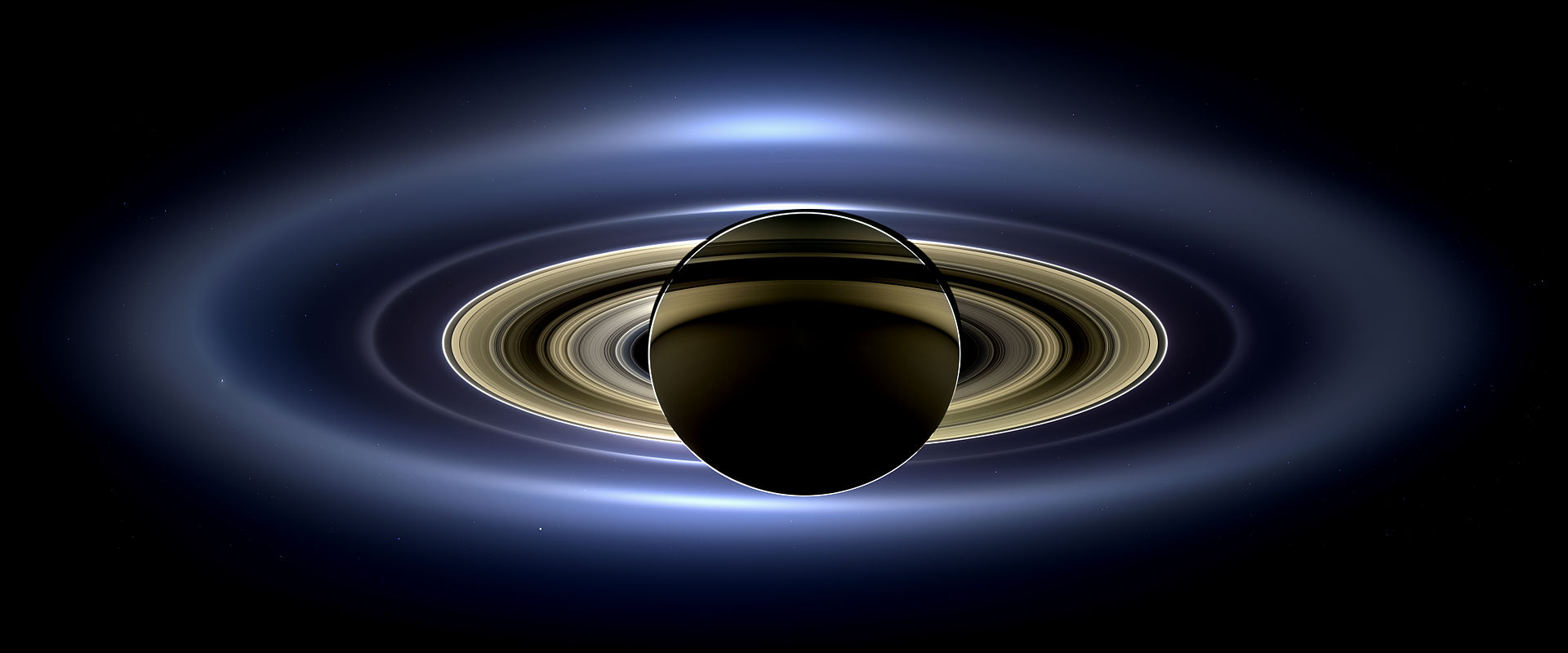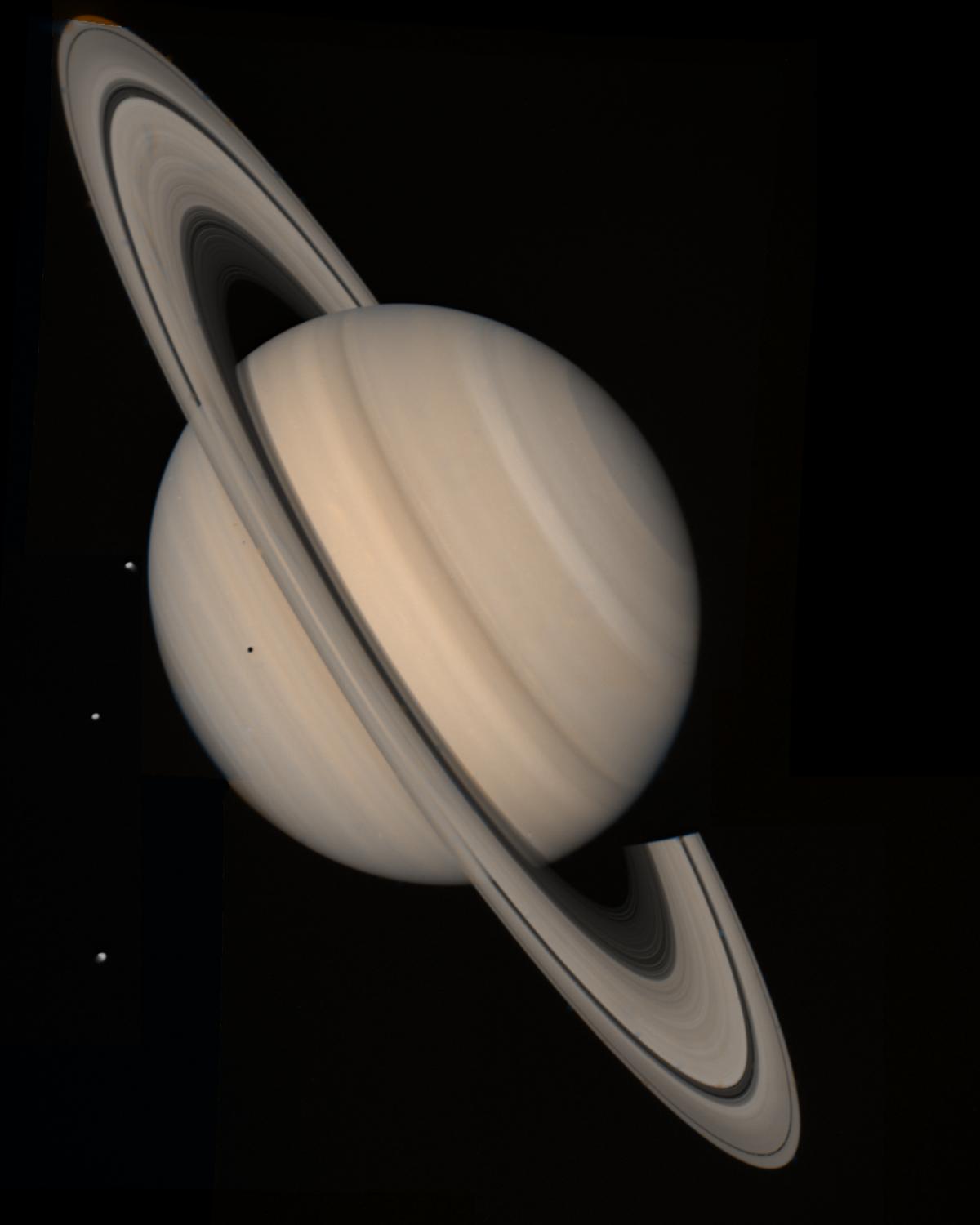Saturn
Saturn is the second-largest planet in the Sol system, being a gas giant of considerable mass. It has seven largest moons, all icy selenic planetoids (save Titan). All of these, as well as dozens of minor moons and stations, are inhabited. Just over half a billion beings live in or around Saturn, the majority humans –but, thanks to the Titan Cohabitation Compact, a not insignificant percentage of that half billion are Calypsians living on the largest moon, Titan.
Geography
Location
Saturn is the sixth planet out from its sun, Sol. It has 82 natural satellites, the largest and most significant of which is Titan. One of its smaller spheroid moons, Enceladus, is essentially the smaller twin of Jupiter's moon Europa: a cryonic world with a life-filled water ocean beneath its glacial crust. Saturn also has numerous human-built artificial satellites (the largest being Opes) in its orbit.Rings
Saturn's defining feature is its extensive, breathtaking ring system composed of innumerable tiny fragments of water ice in a circular ring roughly 20 meters thick. This system is divided into twelve rings, half of which are major: in order of distance from Saturn itself, the D, C, B, A, F, G, and E rings. The visible component of the rings is composed of the C, B, A, and F rings, as G and E are only visible in infrared or when backlit by the sun.Structure
Saturn is primarily composed of hydrogen and helium, with other light elements and gases comprising the rest. It has a core of semi-liquid metallic hydrogen, but as is typical for a gas giant Saturn lacks a solid surface. The outer cronian atmosphere is divided into several faintly visible bands at different latitudes, resulting in turbulence and storms along their boundaries, the largest of which is a giant hexagonal cyclone occupying the north pole of the planet.Aerocolonies
Since Saturn's gravity is only slightly higher than that of Earth, it was the site of the first human "aerocolony." Project Cirrus was the prototype for an entire class of enclosed habitat cities, engineered to rest on the heavier cloud layers and meander across the gaseous surface of the planet according to the whims of the atmospheric currents. As of the present day, 162 million people live in these aerocolonies across Saturn.Ecosystem
Saturn itself is not host to any confirmed life, but its moon Titan may play host to very rudimentary pre-cellular biochemsitry.Natural Resources
Saturn is a bountiful source of both hydrogen, used commonly in fusion reactors, and its antimatter counterpart (used in antimatter catalyst reactors, notably for warp drives). As a result, numerous lucrative aeromining operations have been staged in various levels of Saturn's upper atmosphere and lower exosphere. By far the most prolific industry in the Saturn Sphere is the water trade, with so many sources easily accessible from the rings and moons that Saturn has become well known as the dominant water supplier to the entire Sol system. Supplementing this is the refinement and export of organic chemicals, primarily based out of Titan and Saturn itself, as well as engineering innovations developed by the advanced local technocultures. Lastly, but perhaps most importantly: Saturn's legendary rings attract millions of visitors per Saturn-year, making tourism a surprisingly large facet of the collective Saturnian economy.Archive Data
HAZARDS
- 98.3% hydrogen
- 3.25% helium
- 0.45% methane
- <0.1% other gases
(SATURN)
(SATURN SPHERE)







Comments